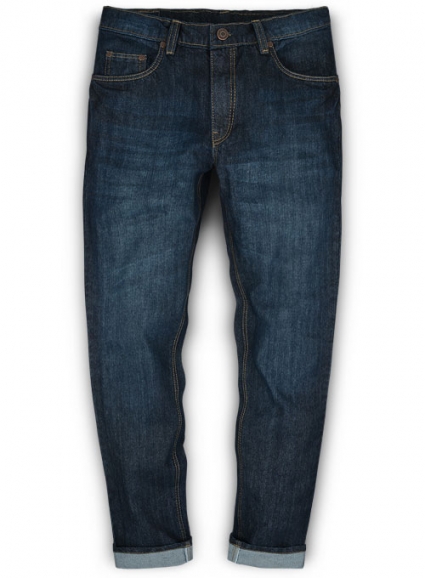How many pairs of jeans do you own? Most people over a half-dozen, with some people owning wear over a dozen pairs of jeans. Regardless, you probably won’t wear all of your jeans on a weekly basis. You may stick with a few of your favorite pairs while leaving the others in your closet.
When storing your jeans for long periods, though, there are a few things you should know. You shouldn’t blindly toss your jeans in your closet. To preserve their shape and protect them from damage, you’ll need to store them the right way. Below are several tips on how to store your jeans.
Wash and Dry Beforehand
Always wash and dry your jeans before storing them. Jeans will inevitably attract dirt and dust when worn. You may not notice any visible stains on them, but they’ll still be dirty. Failure to wash and dry them may result in this dirt and dust embedding itself in the denim fabric while the jeans are being stored.
Of course, it’s best to wash jeans in cold water. Cold water is gentler than warm or hot water. When washed in hot water, the denim fabric will shrink. Cold water doesn’t cause this same shrinkage. You can wash jeans, as well as other denim garments, in cold water without worrying about them shrinking.
For instructions on how to wash your jeans, check the care tag. All jeans have a care tag. It’s a label that includes maintenance instructions, including the best way to wash and dry the jeans.
Rub With a Dryer Sheet
You may want to rub your jeans with a dryer sheet before storing them as well. It will leave your jeans smelling nice and fresh, and more importantly perhaps, it will protect them from static cling.
Jeans can suffer from static cling when stored for an extended period. Static cling involves the buildup of static electricity when the denim fabric. As static electricity builds up, your jeans may cling to other fabrics. Static cling won’t necessarily harm your jeans, but it’s still a nuisance nonetheless. You may retrieve your jeans from your closet, only to discover that they stick to your other clothes.
Rubbing your jeans with a dryer sheet will protect them from static cling. Before storing a pair of jeans for an extended period, take an unused dryer sheet and rub it across the denim surface. Dryer sheets contain scented chemicals that are designed to discharge static electricity and, thus, protect against static cling.
Fold vs Hang
When storing your jeans, you have one of two options: fold or hang. You can either fold your jeans, or you can hang them on a clothes hanger. Which storage method should you choose exactly?
Folding is a quick and easy way to store jeans. You don’t need a clothes hanger, nor do you need a rod. Just fold your jeans once vertically along the pant legs, followed by two more folds of equal length. You can then place the folded jeans on a shelf inside your closet or in an empty drawer.
Many people, however, prefer to hang their jeans on a clothes hanger. When compared to folding, hanging offers better shape retention. Your jeans will retain their natural shape when hung on a clothes hanger.
If you’re going to hang your jeans, remember to use durable and heavy-duty clothes hangers. Jeans, especially heavy denim jeans, can weigh a lot. When stored on a flimsy plastic hanger, they may fall off. To secure your jeans in place, hang them on a durable clothes hanger featuring a solid wooden construction.

Avoid Sealed Bags or Containers
Avoid storing your jeans in sealed bags or containers. Because they are made of a natural fabric (denim), jeans need to breathe. Sealed bags or contains don’t have fresh air flowing into and out of them. If you store your jeans inside of a sealed bag or container, they won’t be able to breathe.
You can store jeans anywhere inside of a closet or a piece of furniture. Closets and furniture aren’t sealed. Fresh air will still be able to flow into and out of them. As a result, your jeans will breathe.
Empty the Pockets
It’s a good idea to empty the pockets before storing your jeans. Most people use their pockets to carry small items. While some of these items are harmless, others may damage your jeans if you don’t remove them.
If you have makeup in your pockets, for instance, you should typically remove it. Makeup can stain your jeans. If it comes out while inside of your jeans, it may cause stains that are difficult to remove. Other items can damage your jeans as well. This is why it’s best to err on the side of caution by emptying the pockets of your jeans prior to storing them.
Empty the pockets also ensures that your jeans will retain their original shape. If the pockets are filled, they’ll protrude out. In turn, your jeans may develop this new shape when stored.
Regulate the Humidity
Depending on how long you intend to store your jeans, you may want to regulate the humidity. As previously mentioned, jeans need to breathe when stored. This is particularly true when storing jeans for a long period. If they aren’t able to breathe, they may develop mildew from the trapped moisture.
Jeans can develop mildew when stored in humid environments as well. You don’t want to store your jeans in an attic or crawlspace. Most attics are crawlspaces aren’t ventilated, so they tend to be humid.
Even your bedroom, however, may be humid. Humidity levels are usually the highest during the summer, but they can still creep up during the cooler months of the year. As the humidity increases, your jeans will become more susceptible to mildew. A simple solution is to regulate the humidity. You can install a dehumidifier near your closet so that it dehumidifies the air around your jeans.











